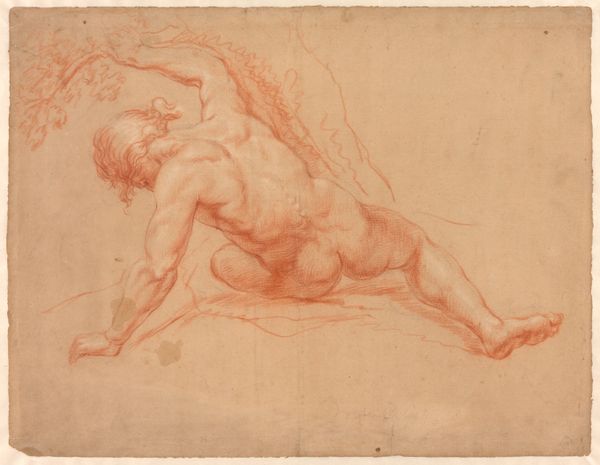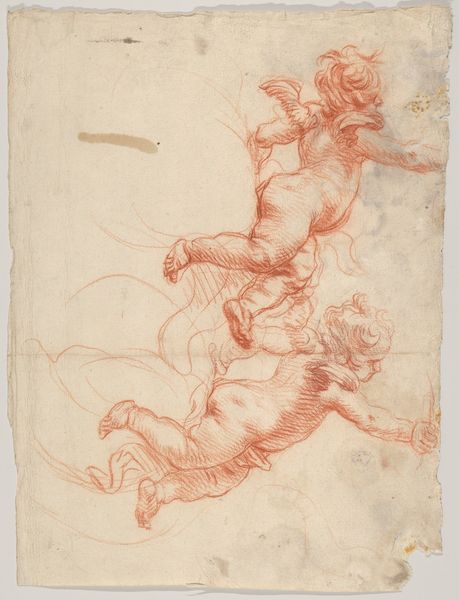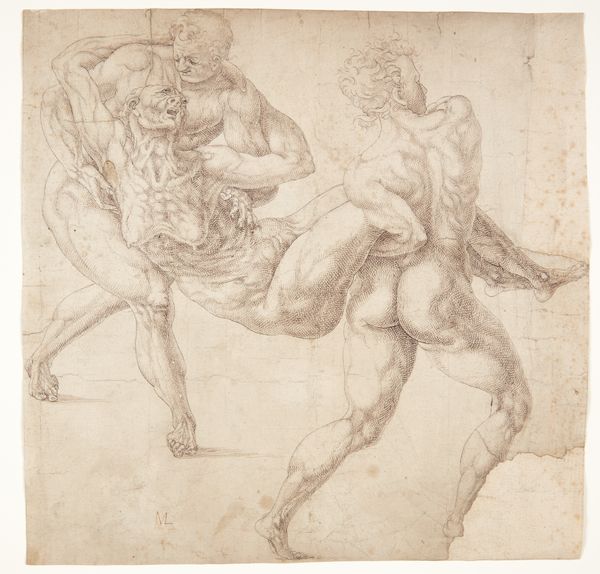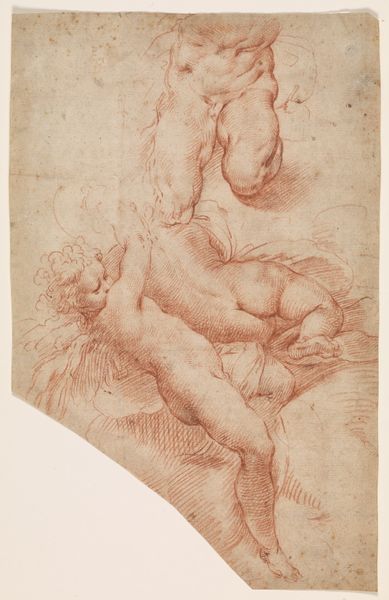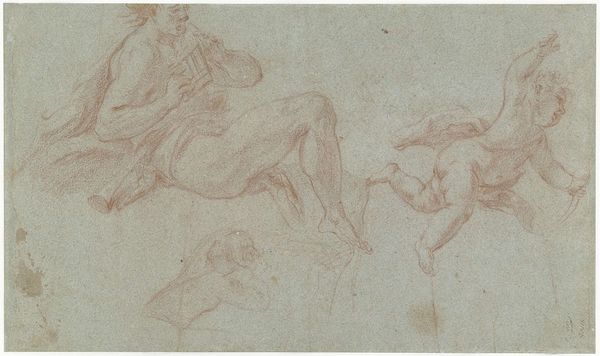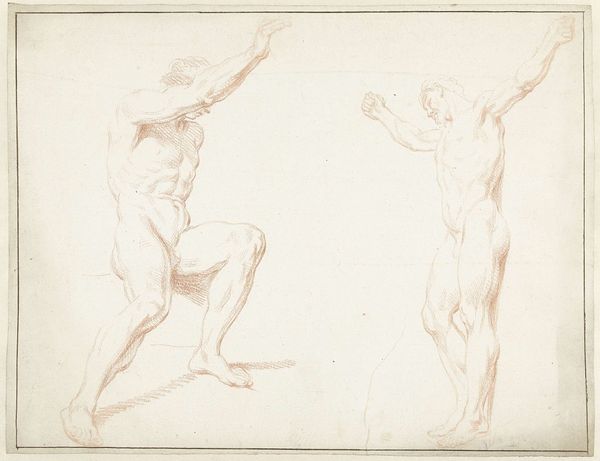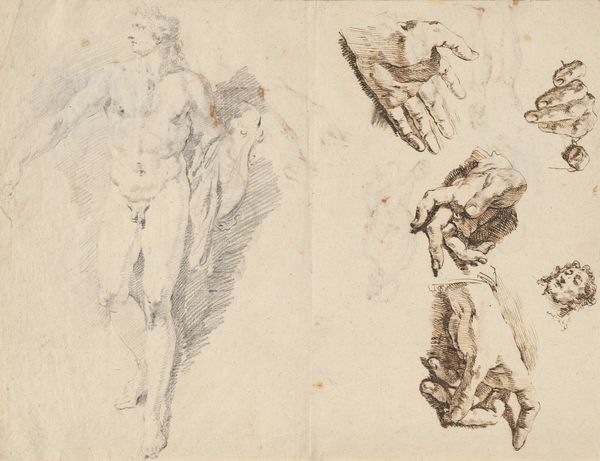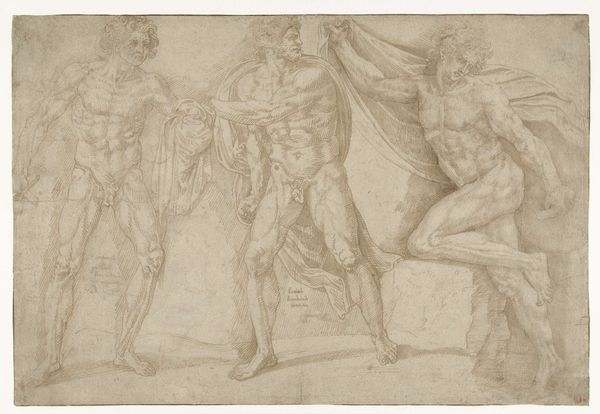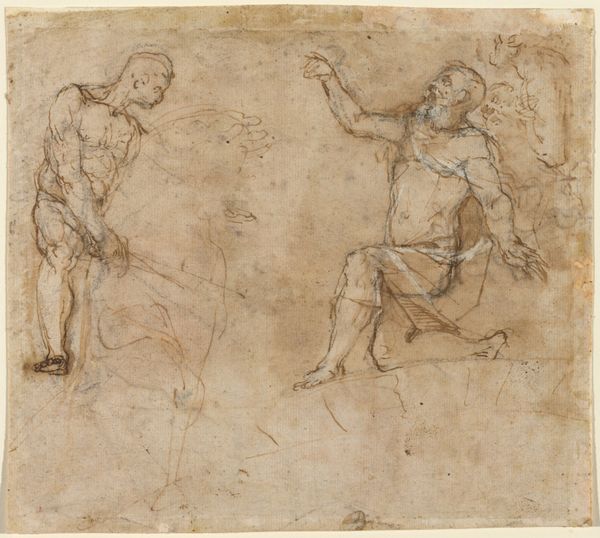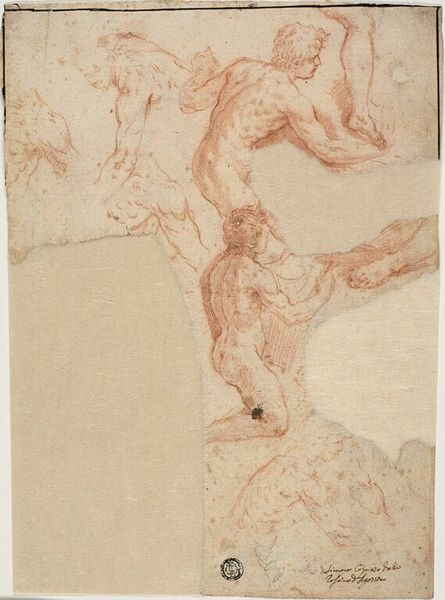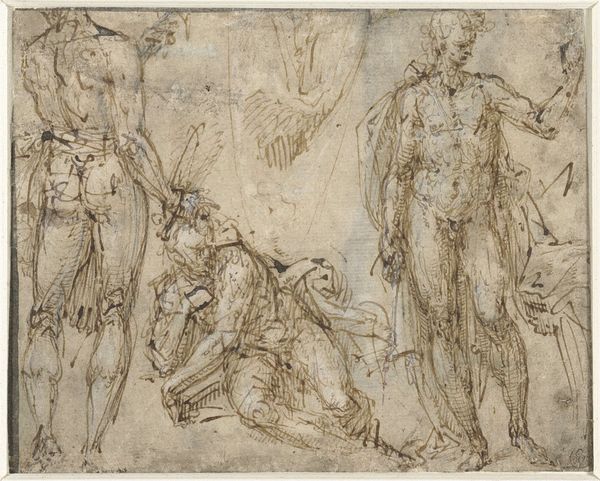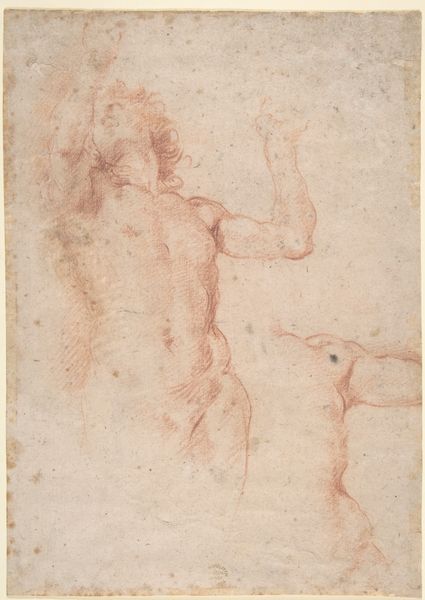
drawing
#
drawing
#
figuration
#
11_renaissance
#
nude
Dimensions: height 328 mm, width 404 mm
Copyright: Rijks Museum: Open Domain
Curator: Immediately, I'm struck by the dynamism in this sheet of studies! The use of line suggests restless energy, and a preoccupation with anatomy and its potentials. Editor: Yes, the sheet is titled "Nude Studies of a Man," and the attribution is to Battista Franco, dating roughly between 1520 and 1561. You know, there is definitely a feeling of anatomical exploration that speaks to the artistic and intellectual climate of the Renaissance, its Humanism and idealisation of man. Curator: Agreed, though I find the variety of poses fascinating from a purely formal perspective. The sanguine figure lunging, juxtaposed with the shadowed, bowed form... there’s a dialogue in the composition itself between action and contemplation, strength and vulnerability. It suggests the Renaissance focus on an almost performative masculinity and control over the body. Editor: I see what you mean. And beyond this aestheticised virility is a palpable humanity. Looking at the studies closer to the grey scale, the backs of the men give the impression of almost raw muscle and sinew. This is the period in which anatomical drawing was emerging, even publicly so! One only has to look at Leonardo's dissections or Vesalius's published anatomical plates. This feels almost voyeuristic! Curator: Absolutely. While some studies show clear refinement, others hint at the quick, observational gesture, a sketch dashed off to capture a fleeting moment of movement. Look at the left corner for example. Editor: As a drawing in red chalk, we see so much tonal richness, from delicate shadows to bold outlines, highlighting the muscular tension and the inherent drama. The artist's concern with perspective and foreshortening really emphasizes how grounded artistic skills were at that time, particularly with all the wealthy Italian commissions coming from the church at this point. Curator: It feels so deeply present and embodies so much the intellectual debates that defined its moment. I appreciate how this piece, at the Rijksmuseum, transcends pure representation, giving the artwork real intellectual texture! Editor: For me, the tension captured here offers a glimpse into a bygone era of both artistic development and humanistic intellectual life; an enduring image worth more than a thousand words.
Comments
No comments
Be the first to comment and join the conversation on the ultimate creative platform.
